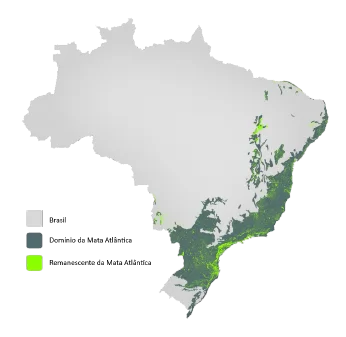
Historical Devastation
Forests in Brazil have been relentlessly devastated since the beginning of Portuguese colonization. The Atlantic Forest currently has the smallest original vegetation coverage among all Brazilian biomes, estimated at around 12%.
Biodiversity Hotspot
The Atlantic Forest is considered a global biodiversity hotspot, meaning it is one of the most biologically rich and threatened areas on the planet. According to a 2023 study by IBGE, there are 2,845 endangered species, including animals and plants, within this biome.


Ecosystem Services
The biome is home to 72% of Brazilians and contributes to 80% of the national GDP. Essential services such as water supply, climate regulation, as well as agriculture, fishing, electricity generation, and tourism depend on the Atlantic Forest. Seven out of the nine major Brazilian watersheds are located in Atlantic Forest areas.
Continuous Threat
Between October 2021 and 2022, over 20,000 hectares of forest were deforested. The conflict between human settlements and forest conservation is an extremely relevant issue, especially in the region that houses approximately 10% of the Brazilian population—the São Paulo Metropolitan Area.


How We Choose to Care for the Atlantic Forest
The Luminous Earth Institute is dedicated to preserving, protecting and regenerating territories located in the Buffer Zones of Conservation Units, such as the Serra do Mar State Park, where our headquarters is situated in Juquitiba. We understand that, as important as reforesting degraded areas, is maintaining and enriching the forest sections along the boundaries of Conservation Units, still teeming with natural life and under threat from real estate speculation, logging, and palm harvesting, among others.
Caring for the forest ensures life in the present and the future, not only for humans but for all living beings on the planet.